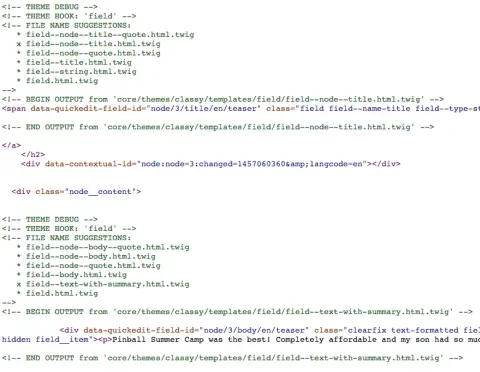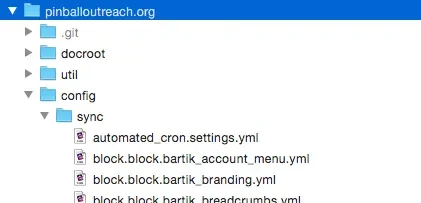This is the second in a series of articles about building a website for a small non-profit using Drupal 8. These articles assume that the reader is already familiar with Drupal 7 development, and focuses on what is new / different in putting together a Drupal 8 site.
In the last article, I talked about Drupal 8's new block layout tools and how they are going to help us build the POP website without relying on external modules like Context. Having done some basic architectural research, it is now time to dive into real development. The first part of that, of course, is setting up our environments. There are quite a few new considerations in getting even this simple a setup in place for Drupal 8, so lets start digging into them.
My Setup
I wanted a pretty basic setup. I have a local development environment setup on laptop, then I wanted to host the code on github, and be able to push updates to a dev server so that my partner Nicole could see them, make comments, and eventually begin entering new content into the site. This is going to be done using a pretty basic dev/stage/live setup, along with using a QA tool we've built here at Lullabot called Tugboat. We'll be going into the details of workflow and deployment in the next article, but there is actually a bunch of new functionality in Drupal 8 surrounding environment and development settings. So what all do we need to know to get this going? Lets find out!
Local Settings
In past versions of Drupal, devs would often modify settings.php to include a localized version to store environment-specific information like database settings or API keys. This file does not get put into version control, but is instead created by hand in each environment to ensure that settings from one do not transfer to another inadvertently. In Drupal 8 this functionality is baked into core.
At the bottom of your settings.php are three commented out lines:
# if (file_exists(__DIR__ . '/settings.local.php')) {
# include __DIR__ . '/settings.local.php';
# }
If you uncomment these lines and place a file named settings.local.php into the same directory as your settings.php, Drupal will automatically see it and include it, along with whatever settings you put in. Drupal core even ships with an example.settings.local.php which you can copy and use as your own. This example file includes several settings pre-configured which can be helpful to know about.
Caching
There are several settings related to caching in the example.settings.local.php which are useful to know about. $settings['cache']['bins']['render'] controls what cache backend is used for the render cache, and $settings['cache']['bins']['dynamic_page_cache'] controls what cache backend is used for the page cache. There are commented out lines for both of these which set the cache to cache.backend.null, which is a special cache backend that is equivalent to turning caching off for the specified setting.
The cache.backend.null cache backend is defined in the development.services.yml file, which is by default included in the example.settings.local.php with this line:
$settings['container_yamls'][] = DRUPAL_ROOT . '/sites/development.services.yml';
If you want to disable caching as described above, then you must leave this line uncommented. If you comment it out, you will get a big ugly error the next time you try and run a cache rebuild.
The development.services.yml file is actually itself a localized configuration file for a variety of other Drupal 8 settings. We'll circle back to this a bit later in the article.
Other Settings
example.settings.local.php also includes a variety of other settings that can help during development. One such setting is rebuild_access. Drupal 8 includes a file called rebuild.php, which you can access from a web browser in order to rebuild Drupal's caches in situations where the Drupal admin is otherwise inaccessible. Normally you need a special token to access rebuild.php, however by setting $settings['rebuild_access'] = TRUE, you can access rebuild without a token for specific environments (like your laptop.)
Another thing you can do is turn on or off CSS and Javascript preprocessing, or show/hide testing modules and themes. It is worth taking the time to go through this file and see what all is available to you in addition to the usual things you would put in a local settings file like your database information.
Trusted Hosts
One setting you'll want to set that isn't pre-defined in example.settings.local.php is trusted_host_patterns. In earlier versions of Drupal, it was relatively easy for attackers to spoof your HTTP host in order to do things like rewrite the link in password reset emails, or poison the cache so that images and links pointed to a different domain. Drupal offers the trusted_host_patterns setting to allow users to specify exactly what hosts Drupal should respond to requests for. For the site www.example.com, you would set this up as follows.
$settings['trusted_host_patterns'] = array(
'^www\.example\.com$',
);
If you want your site to respond to all subdomains of example.com, you would add an entry like so:
$settings['trusted_host_patterns'] = array(
'^www\.example\.com$',
'^.+\.example\.com$',
);
Trusted hosts can be added as needed to this array dependent on your needs. This is also something you'll want to set up on a per-environment basis in a local.settings.php, since each environment will have its own trusted hosts.
Local Service Settings
When Drupal 8 started merging in components from Symfony, we introduced the concept of "services". A service is simply an object that performs a single piece of functionality which is global to your application. For instance, Symfony uses a Mailer service which is used globally to send email. Some other examples of services are Twig (for template management) and Session Handling.
Symfony uses a file called services.yml for managing configuration for services, and just like with our settings.local.php, we can use a file called development.services.yml to manage our localized service configuration. As we saw above, this file is automatically included when we use Drupal 8's default local settings file. If you add this file to your .gitignore, then we can use it for environment-specific configuration just like we do with settings.local.php.
The full scale of configuration that can be managed through services.yml is well outside the scope of this article. The main item of interest from a development standpoint is Twig debugging. When you set debug: true in the twig.config portion of your services configuration file, your HTML output will have a great deal of debugging information added to it. You can see an example of this below:
Every template hook is outlined in the HTML output, so that you can easily determine where that portion of markup is coming from. This is extremely useful, especially for people who are new to Drupal theming. This does come with a cost in terms of performance, so it should not be turned on in production, but for development it is a vital tool.
Configuration Management
One of the major features of Drupal 8 is its new configuration management system. This allows configuration to be exported from one site and imported on another site with the ease of deploying any other code changes. Drupal provides all installations with a sync directory which is where configuration is exported to and imported from. Be default this directory is located in Drupal's files directory, however this is not the best place for it considering the sensitive data that can be stored in your configuration. Ideally you will want to store it outside of your webroot. For my installation I have setup a directory structure like this:
The Drupal installation lives inside docroot, util contains build scripts and other tools that are useful for deployments (more on this in the next article) and config/sync is where my configuration files are going to live. To make this work, you must change settings.php as follows:
$config_directories = array(
CONFIG_SYNC_DIRECTORY => '../config/sync',
);
Note that this will be the same for all sites, so you will want to set it in your main settings.php, not a local.settings.php.
Having done all this, we are now setup for work and ready to setup our development workflow for pushing changes upstream and reviewing changes as they are worked on. That will be the subject of our next article so stay tuned!



